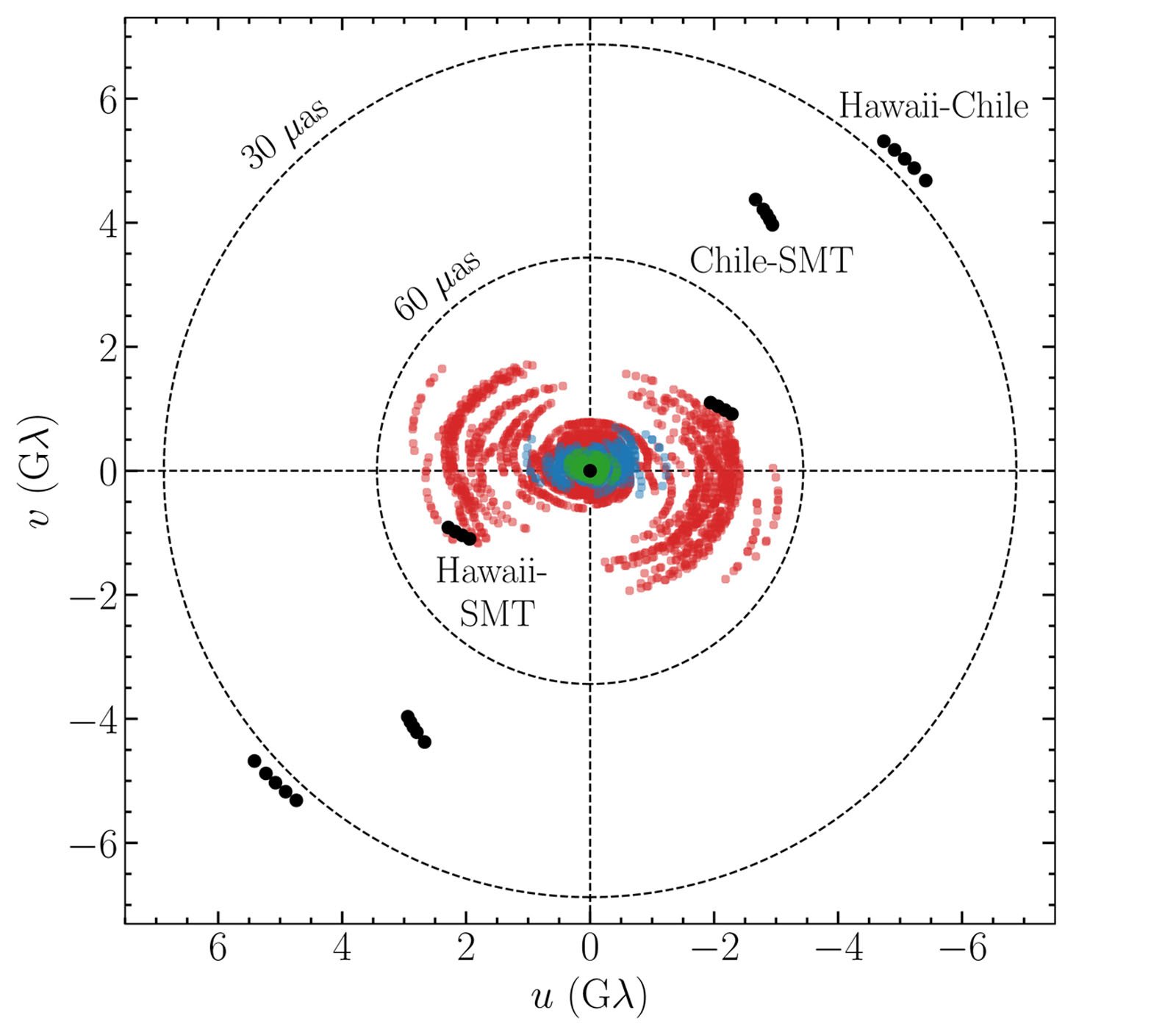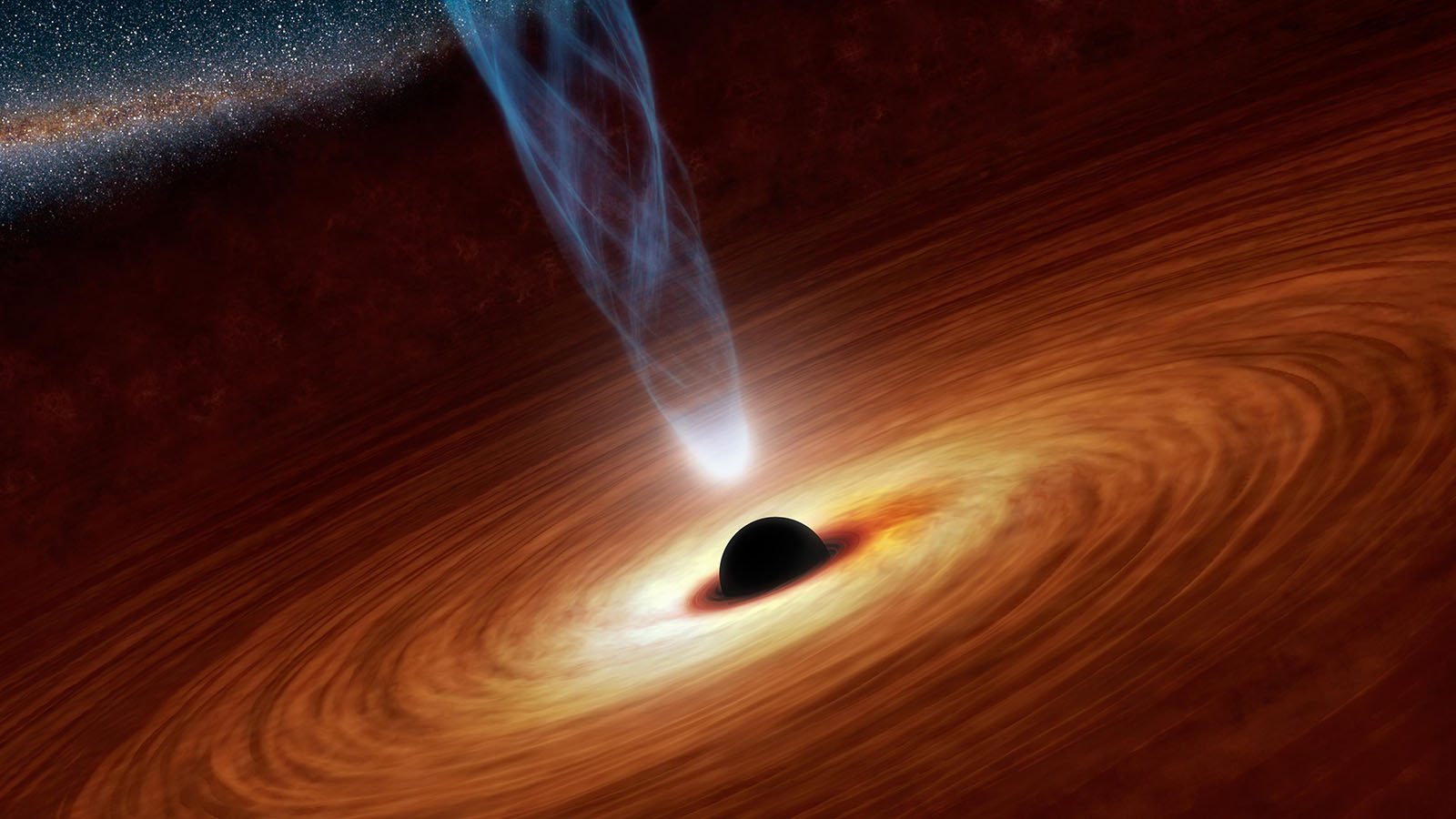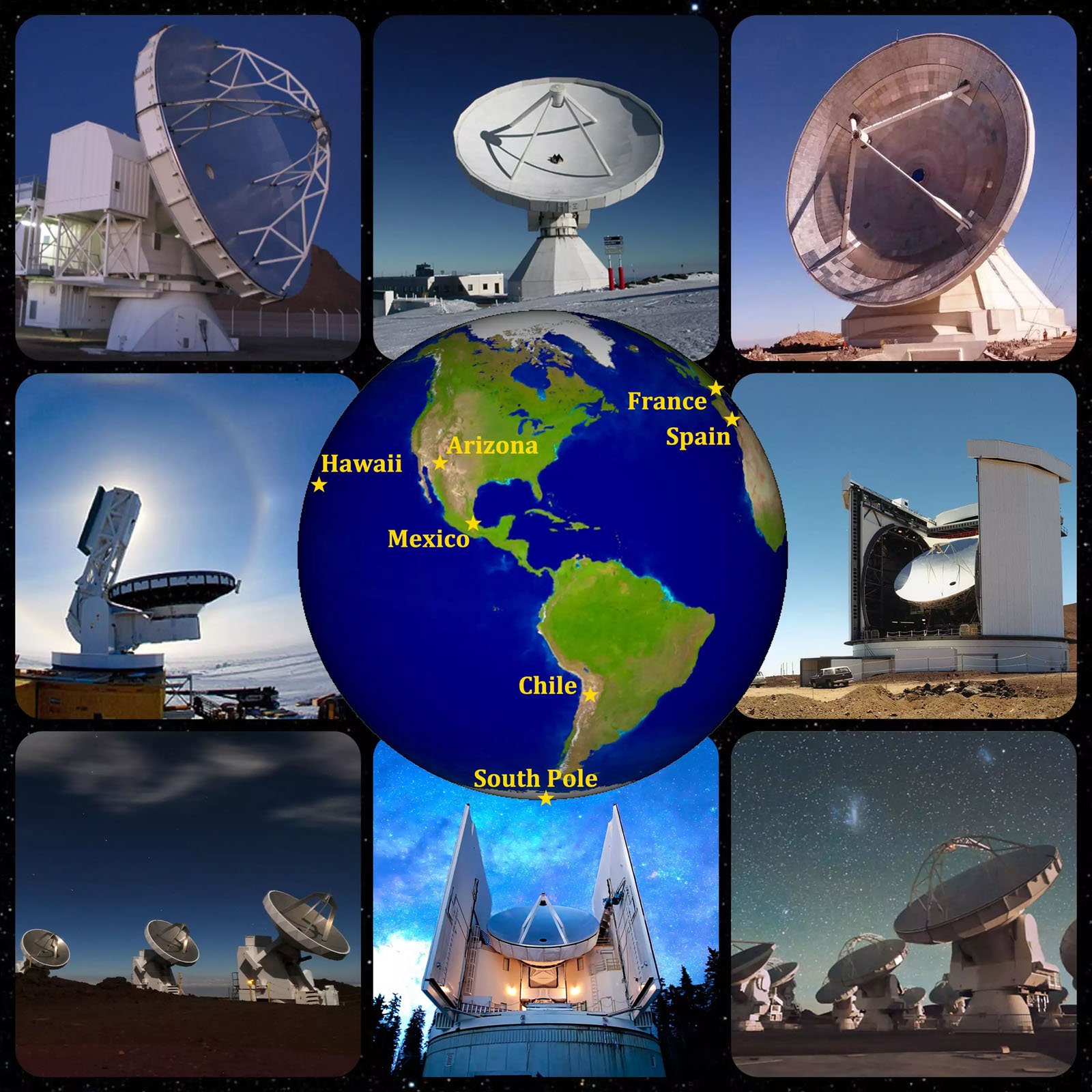The Event Horizon Telescope (EHT) Collaboration and scientists from the Max Planck Institute for Radio Astronomy (MPIfR) in Germany used an Earth-sized radio telescope array to observe the jet base of an evolving plasma jet outflow from a supermassive black hole at an unprecedented angular resolution.
As Space reports, the international team of scientists used the planet-scale telescope to peer at the magnetic structure of the radio galaxy 3C 84, Perseus A, which is home to one of the nearest active supermassive black holes in Earth’s neck of the cosmic woods. While 230 million light-years from Earth, that is still relatively close by.
The findings demonstrate that the EHT, which is celebrated and known for its increasingly detailed images of the supermassive black hole M87*, can also be used to study the magnetic fields of black holes. These magnetic forces are vital to understanding the nature of black holes, specifically how they accrete matter and eject powerful jets, which can themselves reach beyond their host galaxies.
“Their findings also shed light on the way mass is accreted onto the supermassive black hole, which is via advection. The infalling matter is thought to form a strongly magnetized, so-called magnetically arrested disc. In this scenario, the magnetic field lines within the accretion disc become tightly wound and twisted, preventing the efficient release of magnetic energy. Furthermore, our study implies that the 3C 84 black hole is rapidly rotating, thus favoring an association between jet launching and large black hole spins,” explains a press release from MPifR.

EHT’s images of the M87* supermassive black hole have shown the direction of light as it oscillates around the black hole. The property of the light, its linear polarization, offers insights concerning the underlying magnetic field.
In the case of the 3C 84 black hole, strong linear polarization “hints at” a powerful and ordered magnetic field. These magnetic fields are currently believed to be the “driving force” behind powerful plasma jets, which comprise and expel matter not consumed by the black hole.
The properties of these plasma jets are immensely fascinating because plasma jets emitted from supermassive black holes demonstrate the seemingly stronger power of magnetic fields relative to the gravitational force of the black hole. All matter within reach of a black hole’s immense gravity, including light itself, is consumed.

Understanding how the black hole’s gravitational force relates to and interacts with the magnetic fields surrounding it is a subject of extensive study. Magnetism is vital to understanding black holes because these magnetic forces may have a dramatic effect on the nature and evolution of the galaxy that hosts the black hole, especially if the rate at which a black hole spins and the way in which plasma jets are propelled is connected, as it appears to be.
“Why are black holes so good at producing powerful jets? This is one of the most fascinating questions in astrophysics,” says Maciek Wielgus, a researcher at the Max Planck Institute for Radio Astronomy. “We expect that general relativistic effects occurring just above the black hole’s event horizon may be the key to answer this question. Such high resolution observations are finally paving the way towards an observational verification.”
As powerful telescope arrays like the EHT provide observations of energy outflows surrounding supermassive black holes, and scientists study how this energy extends throughout the host galaxy, significant advances concerning the understanding of the supermassive black holes is inevitable, and the fundamental theories that underpin the collective understanding of the very nature of the Universe will be verified through observation for the first time — or disproved, perhaps.

“We are extremely excited because these results are a significant step towards understanding galaxies such as 3C 84. Together with our international partners, we are striving to improve the capabilities of the Event Horizon Telescope, to enable even more detailed insight on jet formation around black holes,” concludes Anton Zensus, Director at the MPIfR and head of its Radio Astronomy / VLBI research department.
VLBI stands for very-long-baseline-interferometry, a process by which numerous telescopes observe the same object. The collected signals are then combined, effectively creating a virtual telescope the size of the connected observatories. In EHT’s case, the array is the diameter of the Earth itself.
Credits: The new study, “Ordered magnetic fields around the 3C 84 central black hole,” was published on February 1, 2024 in the “Astronomy & Astrophysics” journal. The extensive research team was led by Georgios Filippos Paraschos of MPIfR.
